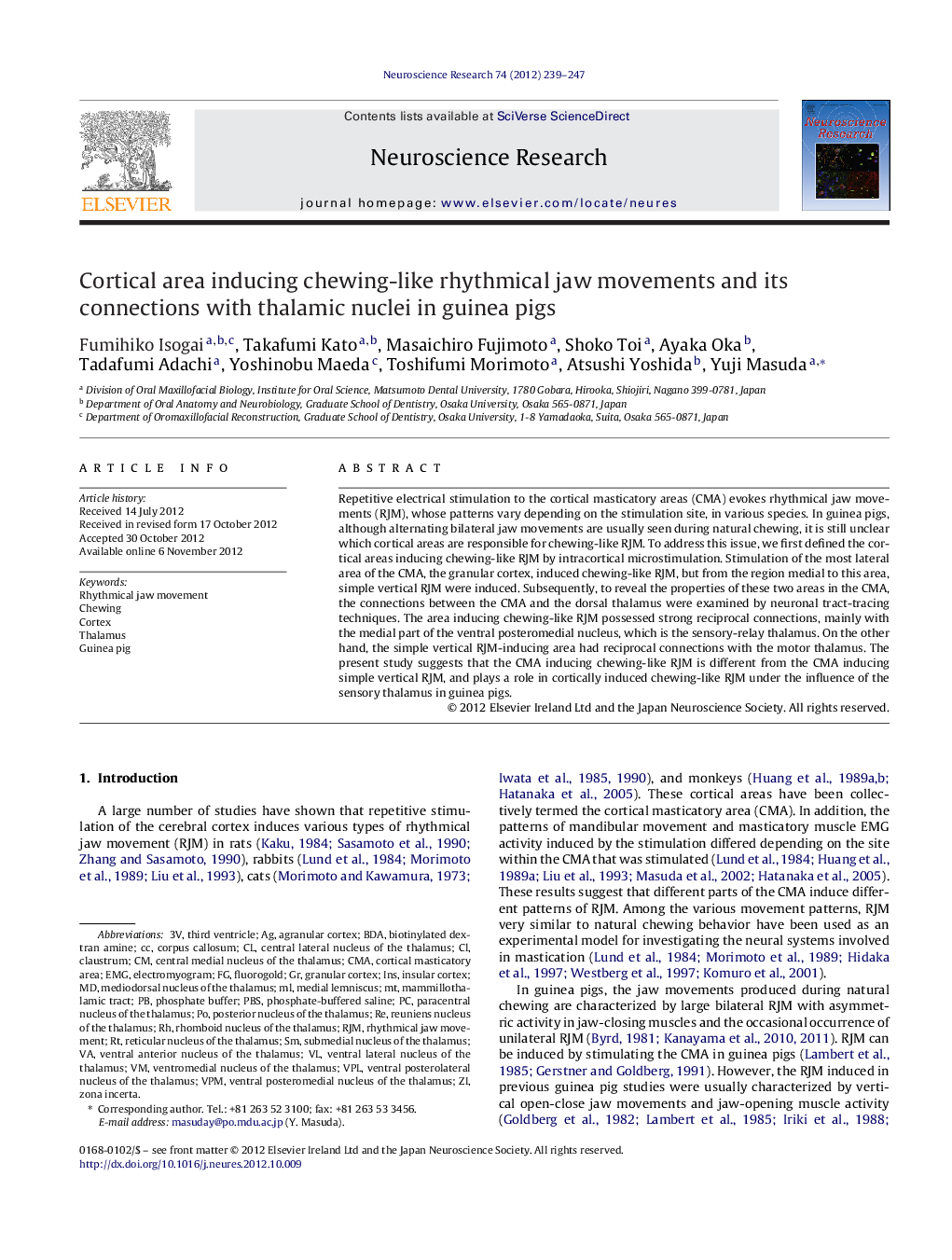| Article ID | Journal | Published Year | Pages | File Type |
|---|---|---|---|---|
| 4351583 | Neuroscience Research | 2012 | 9 Pages |
Repetitive electrical stimulation to the cortical masticatory areas (CMA) evokes rhythmical jaw movements (RJM), whose patterns vary depending on the stimulation site, in various species. In guinea pigs, although alternating bilateral jaw movements are usually seen during natural chewing, it is still unclear which cortical areas are responsible for chewing-like RJM. To address this issue, we first defined the cortical areas inducing chewing-like RJM by intracortical microstimulation. Stimulation of the most lateral area of the CMA, the granular cortex, induced chewing-like RJM, but from the region medial to this area, simple vertical RJM were induced. Subsequently, to reveal the properties of these two areas in the CMA, the connections between the CMA and the dorsal thalamus were examined by neuronal tract-tracing techniques. The area inducing chewing-like RJM possessed strong reciprocal connections, mainly with the medial part of the ventral posteromedial nucleus, which is the sensory-relay thalamus. On the other hand, the simple vertical RJM-inducing area had reciprocal connections with the motor thalamus. The present study suggests that the CMA inducing chewing-like RJM is different from the CMA inducing simple vertical RJM, and plays a role in cortically induced chewing-like RJM under the influence of the sensory thalamus in guinea pigs.
► Chewing-like rhythmical jaw movements (RJM) can be induced in the guinea pig. ► The area inducing chewing-like RJM is located lateral of the CMA in the granular cortex. ► The area inducing chewing-like RJM has reciprocal connections to the sensory thalamus. ► The medial area in the CMA inducing simple vertical RJM is connected to the motor thalamus.
